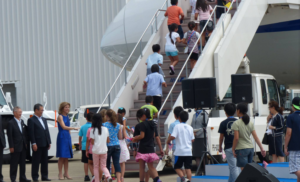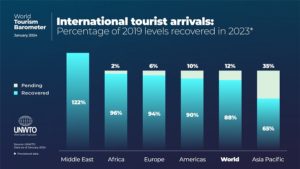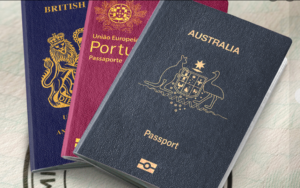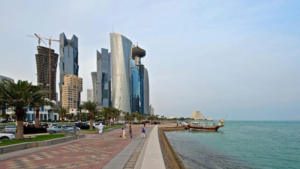Japan tourism recovery in 2012
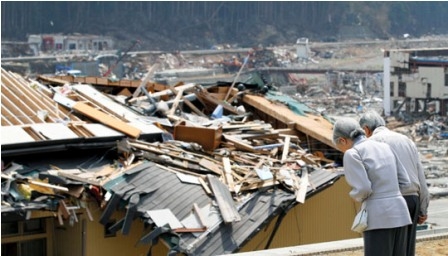
Tokyo :Tourism in Japan is forecast to stage a complete recovery following last year’s earthquake and tsunami during the first half of 2012.
A new report by the World Travel & Tourism Council (WTTC), its fourth and final report since the earthquake of March 11th 2011, forecasts the full recovery of international tourism demand during the first half of 2012, having initially fallen 62 per cent in April 2011.
According to WTTC, Japan’s tourism industry is set to directly contribute $129 billion in 2012, marginally above the $128.5 billion in 2010.
This followed a fall of 3.9 per cent in 2011 due to the earthquake and tsunami.
WTTC president David Scowsill said: “Japan is the third largest tourism economy in the world so its health is of crucial importance to our industry across the globe.“Japan’s tourism recovery has been much better than anyone could have anticipated 12 months ago.
“With help of a forceful marketing strategy, Japan is open and ready for business. Domestic travel recovery strongly last year and 2012 is forecast to be the year for full recovery of international visitors.“It is particularly fitting that WTTC is holding its Global Summit in Sendai and Tokyo from April 16th-19th.
According to Mainichi,the number of foreign visitors to Japan is making a sound recovery as the country prepares to mark the first anniversary of the March 11, 2011 Great East Japan Earthquake and tsunami that triggered the disaster at the Fukushima No. 1 Nuclear Power Plant. However, while Japan welcomes a steady influx of tourists from China, Hong Kong and Taiwan, the number of visitors from South Korea, which accounts for a major share of Japan’s tourism market, has yet to show a marked recovery.
Fukushima Airport, in particular, has been hit hard by the drop in tourists from South Korea, who make up one-quarter of all visitors to Japan.”Last spring were supposed to increase our Seoul flights from three to five a week, and were preparing for that,” lamented airport building official Hiroki Sasaki. The airport previously accommodated regular flights to and from Shanghai and Seoul, but those flights stopped following the outbreak of the nuclear crisis. Nearly one year on, they have yet to resume, and the departure and arrival counters are empty.
In fiscal 2009, about 50,000 people used the airport for regular international flights, while the figure for fiscal 2010 stood at about 51,000. In fiscal 2011, the number dropped to zero. This hit the airport in the pocket, as transportation firms’ building rental fees and duty-free sales had served as significant sources of income. Sales during the April-December period in fiscal 2011 fell by 25 percent, or 86 million yen, to 257 million yen.
Although Shanghai is the most popular destination for Japanese tourists, the Seoul flights have the biggest bearing on the local economy. In recent years, there has been a surge in South Korean passengers arriving in Fukushima to play golf — and golf courses have been bought up with South Korean capital. In fiscal 2010, South Koreans made up about 80 percent of the passengers on Fukushima’s flights to and from Seoul, and local tourism officials say almost all of them came to play golf.
“There are many people from the wealthy class who stay for over a week and spend a lot on souvenirs when they return home,” says Sasaki, commenting on the South Korea group-tour participants who arrive in Fukushima.Masayuki Kurokawa, the head of Arrow Lake Country club, a golf facility about 15 minutes by car from the airport, is keen to see the South Korean visitors return.
“We’ve been working to have flights resumed, but this has had little effect,” he says. About 70 percent of the club’s users in 2010 were from South Korea. Asiana Airlines, which operated Seoul flights before the outbreak of the nuclear crisis, says it has no plans to resume them for the time being.
The Japan National Tourism Organization (JNTO) concludes that the “extremely sensitive national sentiment in South Korea regarding the effects of the nuclear disaster” has played a part in the inability to go ahead and resume flights and restore demand in visits to Japan on a nationwide scale.
The tourism organization adds that in South Korea, a country that is geographically close to Japan and interested in Japan’s movements, there is a tendency for the effects of the nuclear disaster and radiation leaks to be reported on a bigger scale than in other countries. Only recently it was prominently reported in South Korea that the temperature insides the No. 2 reactor at the Fukushima No. 1 Nuclear Power Plant had risen rapidly due to a broken thermometer.
The strong yen in relation to the won has also had an impact on the situation.”A mood in which people are keeping a distance from Japan has been formed through a combination of factors,” a JNTO representative said. The result? Up until January this year, Japan marked five straight months in which the number of visitors from South Korea was 30 percent lower than the corresponding month the previous year.
In contrast are the Chinese tourist markets of China, Hong Kong and Taiwan. In January this year the number of visitors to Japan from these areas reached record highs — partly due to the timing of the Chinese New Year, which was in February last year. The Huis Ten Bosch theme park in Nagasaki Prefecture says it saw a 20 percent rise in visitors from Asia — most of whom were from China — compared with the previous year’s figure.
After the March 2011 quake and tsunami, the number of visitors from Europe and other areas of Southeast Asia dropped just like the number of visitors from South Korea, but cheap tours have been successful in drawing them back. In January this year, visitors from China marked a 40 percent increase from the same month last year, and overall visitor numbers for January were only 4 percent below the figure marked in January 2011 — the first time since the March 2011 disasters that the month-on-month figures fell to single digits.
Asian markets besides the Chinese markets have also shown remarkable recoveries — particularly in terms of visitors from Thailand and Malaysia. And while the European financial crisis has resulted in a slow recovery in visits from Germany and France, the month-on-month declines in visitors from the United States and Britain also narrowed to single digits in December last year. This has partially made up for the comparatively low number of visitors from South Korea.The Japan Tourism Agency has set a goal of Japan receiving 9 million visitors in 2012, above the 8.61 million marked in 2010.

